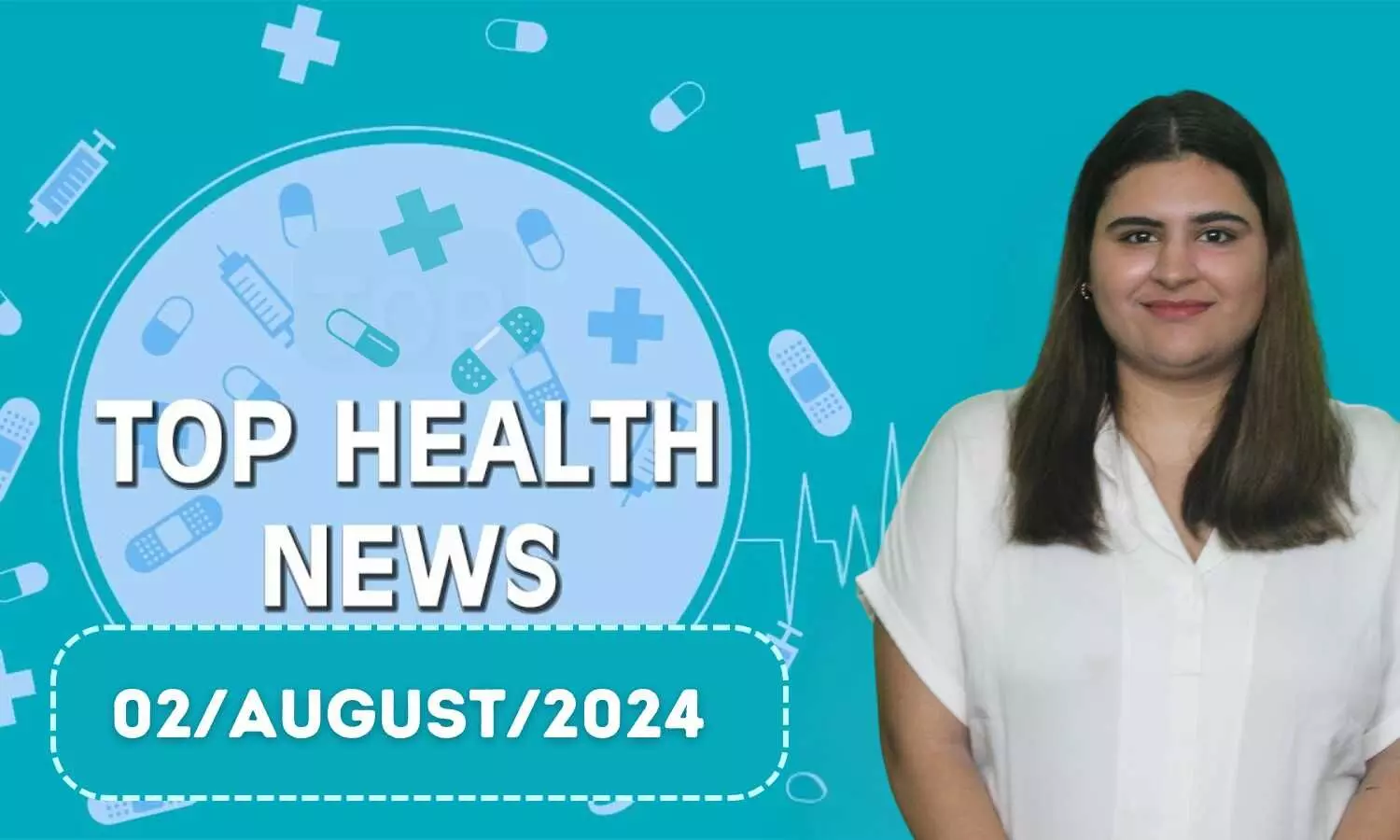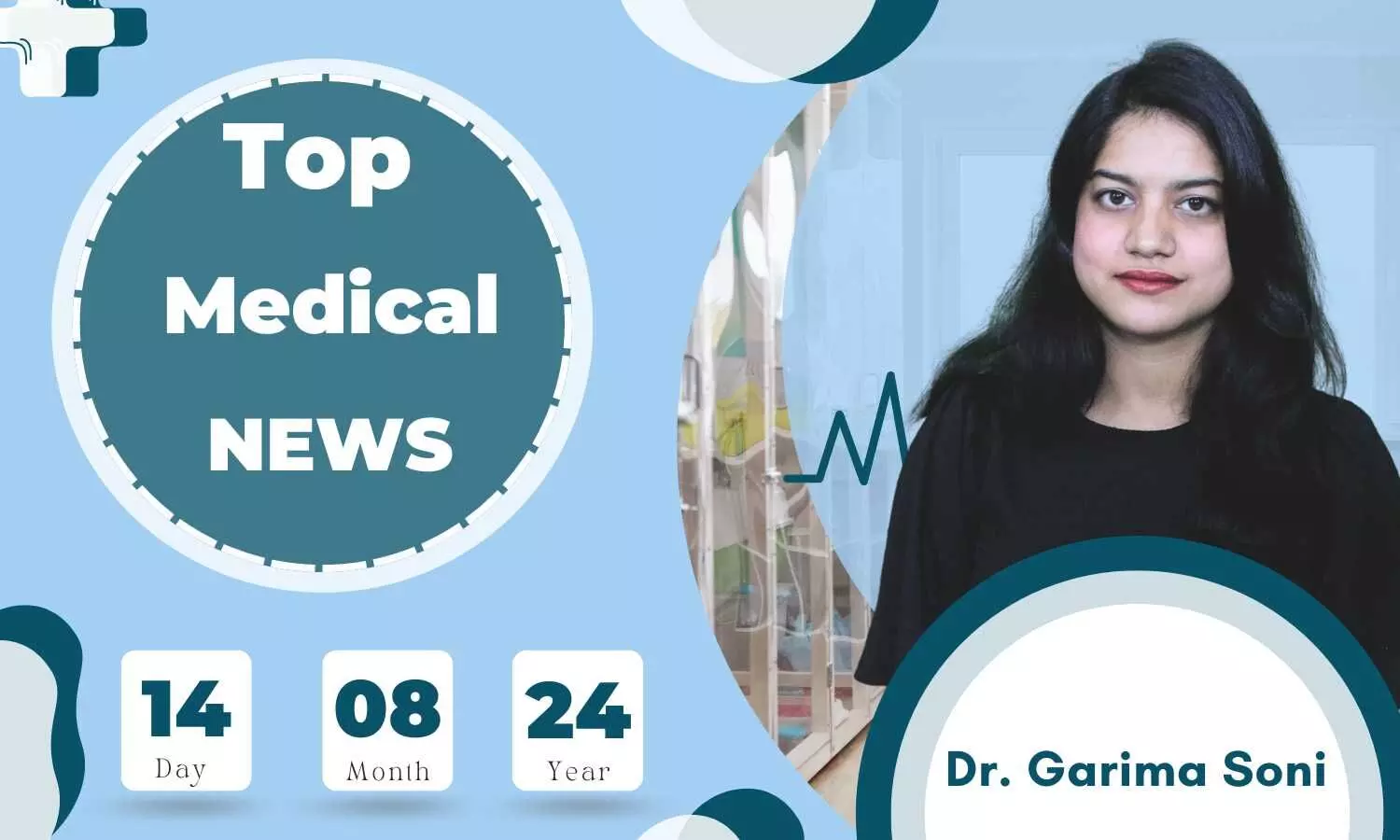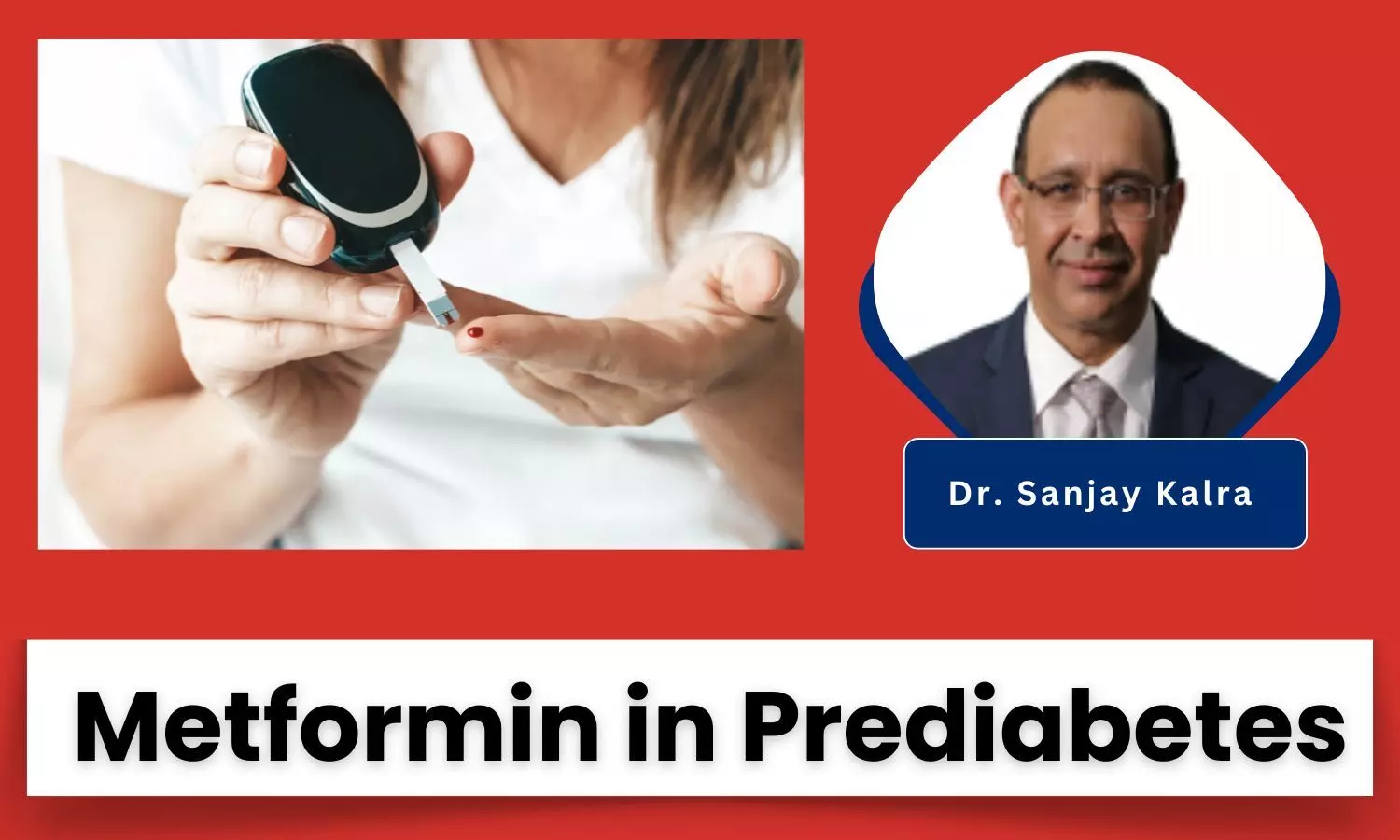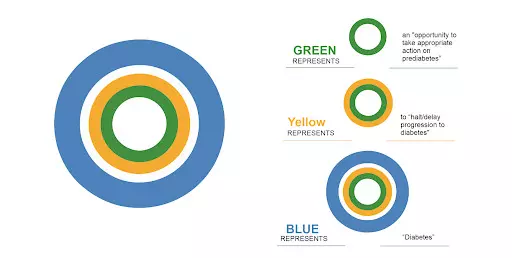Health Bulletin 14/ August/ 2024

Here are the top health news for the day:
For more information, click on the link below:
Powered by WPeMatico

Here are the top health news for the day:
For more information, click on the link below:
Powered by WPeMatico

Here are the top medical news for the day:
Powered by WPeMatico

Kolkata: Amid nationwide protests following the rape and murder of a postgraduate medico at Kolkata’s RG Kar Medical College and Hospital, the West Bengal Medical Council urged all agitating doctors under its jurisdiction to end their ongoing strike and return to work.
The Council on Tuesday requested all the doctors to call off their current strike and join the workplace as soon as possible keeping in mind the health of the common people.
Doctors across the country, are protesting over the sexual assault and murder of a woman post-graduate trainee (PGT) doctor at Kolkata’s RG Kar Medical College and Hospital on August 9.
According to an ANI report, in the letter signed by Sudipto Roy, President of the Council, it said, “We are deeply shocked and saddened by the recent sudden death of a young female doctor at the R.G Kar Medical College and Hospital. The West Bengal Medical Council strongly condemns this incident and demands justice against this heinous incident through immediate arrest and speedy trial of the guilty person.”
Also Read:Kolkata Doctor rape-murder: Doctors stage nationwide protest, healthcare services hit
“We are happy that the Chief Minister, Government of West Bengal, Mamata Banerjee intervened in this matter very swiftly, accepted the demands of all the agitating doctors, and directed the administration to take swift action against the guilty person/persons. The Council has full confidence in the Chief Minister as well as the State Government and believes that the family of our colleague, the deceased young doctor, will get speedy justice,” it added.
The West Bengal Medical Council further mentioned that the indefinite strike called by a section of the medical community across the state is disrupting the medical services of the poor people who are facing the services of government hospitals in the entire state, news agency ANI reported.
“In this situation, the West Bengal Medical Council requests all the doctors under it, keeping in mind the health of the common people, to call off their current strike movement and join the workplace as soon as possible and help restore normalcy in the health sector of the state,” the letter said.
The post-graduate trainee doctor was found dead in the seminar hall of RG Kar Medical College and Hospital in Kolkata on August 9. An investigation has confirmed rape and murder, with the victim’s body showing signs of a struggle. The family has alleged that the victim was raped and murdered.
The Calcutta High Court on Tuesday transferred the investigation into the case to the CBI.
Powered by WPeMatico
Powered by WPeMatico
Powered by WPeMatico
Powered by WPeMatico
Powered by WPeMatico
Powered by WPeMatico

Jaipur: The Rajasthan High Court single judge bench recently took cognisance of the State Government’s failure to take action against Jhunjhunu’s Singhania University, which is offering MBBS admission despite not having the required approval from the National Medical Commission (NMC), the Apex Medical Education Regulatory Body in India.
Further, the single-judge bench of HC comprising Justice Sameer Jain on Monday asked the Additional Chief Secretary of the State Higher Education Department to appear before it on Tuesday and explain why action was taken against the institute i.e. Singhania University even after a complaint was filed in this regard by the NMC.
The HC bench issued this order while considering the pleas of the students who obtained MBBS degrees from Singhania University.
Medical Dialogues had earlier reported that taking note of the unpermitted MBBS and other medical courses being offered by Singhania University last year, NMC had issued an alert warning medical aspirants about the varsity’s mischievous claim.
The Commission issued the warning after an advertisement published by Singhania University, Pacheri Bari, Distt. Jhunjhunu, Rajasthan, inviting applications for MBBS and other medical courses.
Also Read: NMC warns against illegal MBBS and other medical courses at Singhania University
As per the latest media report by the Times of India, during the hearing of the plea by the MBBS students at Singhania University, NMC submitted before the HC that they had informed the State Government in time that Singhania University was not allowed to run an MBBS course and that enrolments to the course should have been closed.
UGC submitted that they allowed the University to run other courses, including B.Ed, but not an MBBS course. After taking note of the submissions by NMC and UGC, the HC bench directed the ACS Higher Education to appear before the Court and explain the situation.
Commenting on the matter, Sunil Kumar Singodia, associated with the case, informed TOI that the petitioners appeared in NEET 2016-2017 exam and were declared eligible. He added, “At this time, Singhania University issued an advertisement and sought applications for admission to the MBBS course.”
Back in 2022 also, Singhania University published an advertisement in various newspapers claiming that the High Court in the case of IGNOU had held that there was no provision in the Indian Medical Council Act which authorises and empowers BoG-MCI to grant permission or recognition to IGNOU to enable it to take admission and impart education in MBBS and other medical courses.
Referring to this, NMC had clarified that the varsity mischievously claimed that it was covered by a judgment of the High Court without referring to the cause title and Hon’ble Court that has pronounced it. Such a claim was frivolous, and baseless and was made in complete violation of the law made by the Parliament, the Commission had earlier clarified.
“It may be noted that the claim so made by the Singhania University is in violation of the provisions of the India Medical Council Act, 1956 and also NMC Act, 2019 and the Regulations framed there under. Accordingly, any admissions that are made by the Singhania University, Pacheri Bari, Distt. Jhunjhunu, Rajasthan in the courses of medicine (MBBS) is illegal and void ab initio,” NMC had mentioned.
In 2019, the erstwhile Medical Council of India (MCI) noted that all courses including MBBS, diploma and Doctor of Medicine courses were being run without permission and then it debunked the university claim referring to certain HC judgement that the state medical council have to recognise such degrees.
At that time, it had come to the notice of the Board of Governors of MCI that Singhania University was running courses, such as MBBS; Doctor of Medicine courses in Pharmacology, Anatomy, Biochemistry, Physiology, General Medicine, Obstetrics and Gynecology, Ophthalmology, Pathology, Community Medicine and Dermatology; and Diploma courses in Anesthesia, Obstetrics and Gynecology, Immuno- Hematology and Blood Transfusion, Oto-Rhino-Laryngology, and Radio-Diagnosis. The said institution had claimed that as per Punjab & Haryana High Court Judgment (following Supreme Court Judgment) in the Neelam Devi case, State Medical Council/any other concerned Council shall have to recognize the degree/ diploma/certificate awarded by the University ad shall have to enrol the degree holder to enable him/leer to do the practice.
Also Read: UGC warns against illegal MBBS and other medical courses at Singhania University
Powered by WPeMatico

The first World Prediabetes Day was organized by the Endocrine Society of India and the South Federation of Endocrine Societies on 14th August 2021. This date falls 90 days before the World Diabetes Day on November 14. It was selected because it takes 90 days to obtain a significant reduction in the raised glycosylated hemoglobin (HbA1c) levels.1 The logo of prediabetes (shown below), launched in 2022, signifies the “window of opportunity” that prediabetes provides to prevent or delay the onset of type 2 diabetes and the related complications. It underscores the importance of early detection and timely intervention in managing prediabetes.
Every August 14, World Prediabetes Day is commemorated. Increased awareness and a call for early action are necessary for the management of prediabetes; the symbolic logo of the Prediabetes ring, shown below (Fig. 1), illustrates how “Acting Early at Prediabetes” is crucial for prediabetes. Metformin’s approval by the Drug Controller General of India (DCGI) in 2022 transformed the management of prediabetes and made it feasible to lower risk and delay the onset of type 2 diabetes mellitus (T2DM); currently, the DCGI indicates metformin in adults prediabetes with overweight patients with impaired glucose tolerance (IGT) and/or impaired fasting glucose (IFG), and/or increased HbA1C and still progressing towards T2DM despite the implementation of intensive lifestyle changes for 3 to 6 months (1).

Figure 1: Prediabetes Ring, Beat Prediabetes Initiative for India by International Diabetes Federation South East Asia
Prediabetes is an alarming condition, affecting 373.9 million people globally (2). India has 136 million people with prediabetes(3). Studies indicated that nearly 40% to 50% of Indian prediabetics may develop type 2 diabetes over three to five years (2). The prevalence of prediabetes is higher in rural areas as compared to diabetes (15.2% prediabetes in rural vs 8.9% diabetes in rural), as per the ICMR-INDIAB 17 study (2).
Prediabetes in Adolescents: Prediabetes in adolescents has increased recently around the world; with incidence ranging up to 23%, which is concerningly high and necessitates systemic action (4). The DERVAN (aDolescent and prEconception health peRspectiVe of Adult Non-communicable diseases) cohort further revealed that prediabetes in Indian adolescents is mainly caused by obesity driven by hyperinsulinemia, overworking of the pancreas, impaired β-cell function, and inadequate insulin production in undernourished individuals (5). Early intervention and risk assessment are essential to prevent future complications of diabetes, as prediabetes is merely the tip of the sugary iceberg when it comes to the disease. Prediabetes is significantly associated with cardiovascular, cerebrovascular, renal, and several other co-morbid conditions (2).
Diabetes Prevention & Delaying Progression of Prediabetes: Need & Scope of Metformin: Even delaying the onset of diabetes offers several possible benefits, even though prevention is the best outcome. People with diabetes are more likely to experience complications related to their diabetes, face stigmas or discrimination, and need more tests, procedures, and close monitoring (such as retinal and foot examinations and more stringent blood pressure control monitoring) than people with prediabetes (6).
Long-term adherence is often challenging in patients maintaining lifestyle modification of diet and physical activities (7,8). A cross-sectional study conducted in India among 4470 patients showed that only 23.3% and 31.7% adhere to diet and moderate exercise regularly (9).
Metformin is the only drug indicated for delaying or preventing T2D and can be considered for prediabetes in adults at higher risk of incident diabetes, in whom the benefits are strongest (6,10).
Benefit of Adding Metformin to Lifestyle Interventions: A randomized controlled experiment called the Diabetes Community Lifestyle Improvement Program (D-CLIP) was conducted among overweight/obese Asian Indian people who had either IGT, IFG, or IFG plus IGT designed to prevent diabetes. Through community-based recruitment, eligible individuals were identified, and they were randomized to receive either standard lifestyle advice (control) or a 6-month culturally-tailored lifestyle curriculum based on the U.S. Diabetes Prevention Program, plus step-wise addition of metformin (500 mg, twice daily) for participants who were at highest risk of developing diabetes at ≥4 months of follow-up. During the 3-year follow-up period, about 25.7% of intervention participants and 34.9% of control individuals developed diabetes; the relative risk reduction was 32%. Metformin decreased the relative risk by 31% in IGT, 12% in IFG, and 36% in IFG + IGT. Adding metformin in a stepwise manner to lifestyle education effectively prevents or delays diabetes in adults with prediabetes (11).
Effect of Metformin on Diabetes Incidence: Metformin has been demonstrated to significantly decrease diabetes incident risk in overweight and obese patients with prediabetes, according to several randomized controlled trials, including the Diabetes Prevention Program (DPP) research. Over three years, metformin demonstrated a 31% relative risk decrease in diabetes incidents compared to placebo, with a number needed to treat = 14 (12).
Effect of Metformin in Coronary Atherosclerosis in Prediabetes: An analysis conducted by Goldberg, Ronald B et.al., comparing metformin treatment or an individual behavioral lifestyle intervention program with placebo on coronary artery calcium (CAC) severity and presence in the long-term DPP/DPPOS. The Diabetes Prevention Program Outcome Study (DPPOS) consists of 3,234 people who had prediabetes, following an average of 14 years of follow-up, 2,029 patients had their coronary artery calcium (CAC) assessed. According to the study, men who took metformin experienced a remarkable 41% reduction in CAC severity when compared to placebo, but not a lifestyle change. This suggested that among men with prediabetes, metformin protects against coronary atherosclerosis (13).
The follow-up of UKPDS (United Kingdom Prospective Diabetes Study) participants for more than 4 decades with 80000 years accrued, one of the longest diabetes studies, revealed that early treatment with metformin led to 31% myocardial infarction and 20% overall risk reduction for death from any cause (14). Metformin, while producing a similar improvement in glycemic control as insulin or sulfonylureas, also markedly reduced ASCVD (atherosclerotic cardiovascular disease) by approximately 40%(15).
Metformin: Approved Pharmacological Agent in Prediabetes: The DCGI (Drug Controller General of India) approved metformin in prediabetes reduction in the risk or delay of the onset of T2DM in adults(8). In high-risk patients, the Endocrine Society and the American Diabetes Association’s Paediatric Obesity Clinical Guidelines suggest using metformin in prediabetes in addition to lifestyle changes (4).
Key Takeaways:
References:
1. Recommendations of the SEC (Endocrinology & Metabolism) made in its 86th meeting held on 26.04.2022 & 29.04.2022 at CDSCO (HQ), New Delhi. Retrieved on 1st August 2024 from https://cdsco.gov.in/opencms/resources/UploadCDSCOWeb/2018/UploadCommitteeFiles/Recommendations%20Endocrinology%20%2026.4.22%20&%2029.4.22.pdf
2. Achuth KS, Subramanian M, Pradeep C. Prevalence of pre-diabetes and its associated risk factors among people in rural field practice area of Vydehi Institute of Medical Sciences and Research Centre Bangalore. Int J Community Med Public Health 2024;11:1675-80
3. Anjana, Ranjit Mohan et al. “Metabolic non-communicable disease health report of India: the ICMR-INDIAB national cross-sectional study (ICMR-INDIAB-17).” The lancet. Diabetes & endocrinology vol. 11,7 (2023): 474-489. doi:10.1016/S2213-8587(23)00119-5
4. Gupta, Anju et al. “Prediabetes in children and adolescents: A ticking bomb!.” World journal of clinical pediatrics vol. 13,2 92127. 9 Jun. 2024, doi:10.5409/wjcp.v13.i2.92127
5. Patil, Suvarna et al. “Prediabetes in rural adolescent girls from DERVAN cohort: data from the KONKAN region of the state of Maharashtra, India (DERVAN-4).” Frontiers in public health vol. 11 1181401. 3 Aug. 2023, doi:10.3389/fpubh.2023.1181401
6. American Diabetes Association and National Institute of Diabetes, Digestive and Kidney Diseases. “The prevention or delay of type 2 diabetes.” Diabetes care vol. 25,4 (2002): 742-9. doi:10.2337/diacare.25.4.742
7. Jose, Jacob, and Nihal Thomas. “How should one tackle prediabetes in India?.” The Indian journal of medical research vol. 148,6 (2018): 675-676. doi:10.4103/ijmr.IJMR_1785_18
8. Kalra, Sanjay et al. “Prediabetes: A pragmatic triage for preventive pharmacotherapy.” JPMA. The Journal of the Pakistan Medical Association vol. 72,2 (2022): 369-372. doi:10.47391/JPMA.22-36
9. Taruna Sharma, Juhi Kalra, DC Dhasmana, Harish Basera. Poor adherence to treatment: A major challenge in diabetes. JIACM 2014; 15(1): 26-9
10. Das AK, Mohan V, Ramachandran A, et al. An Expert Group Consensus Statement on “Approach and Management of Prediabetes in India”. J Assoc Physicians India 2022;70(12):69–78.
11. Weber, Mary Beth et al. “The Stepwise Approach to Diabetes Prevention: Results From the D-CLIP Randomized Controlled Trial.” Diabetes care vol. 39,10 (2016): 1760-7. doi:10.2337/dc16-1241
12. Moin, Tannaz et al. “Review of Metformin Use for Type 2 Diabetes Prevention.” American journal of preventive medicine vol. 55,4 (2018): 565-574. doi:10.1016/j.amepre.2018.04.038
13. Goldberg, Ronald B et al. “Effect of Long-Term Metformin and Lifestyle in the Diabetes Prevention Program and Its Outcome Study on Coronary Artery Calcium.” Circulation vol. 136,1 (2017): 52-64. doi:10.1161/CIRCULATIONAHA.116.025483
14. Adler, Amanda I., et al. ‘Post-Trial Monitoring of a Randomised Controlled Trial of Intensive Glycaemic Control in Type 2 Diabetes Extended from 10 Years to 24 Years (UKPDS 91).’ Lancet, vol. 404, no. 10448, 2024, https://doi.org/10.1016/S0140-6736(24)00537-3.
15. Effect of intensive blood-glucose control with metformin on complications in overweight patients with type 2 diabetes (UKPDS 34). UK Prospective Diabetes Study (UKPDS) Group. Lancet 1998; 352:854-865
Powered by WPeMatico
